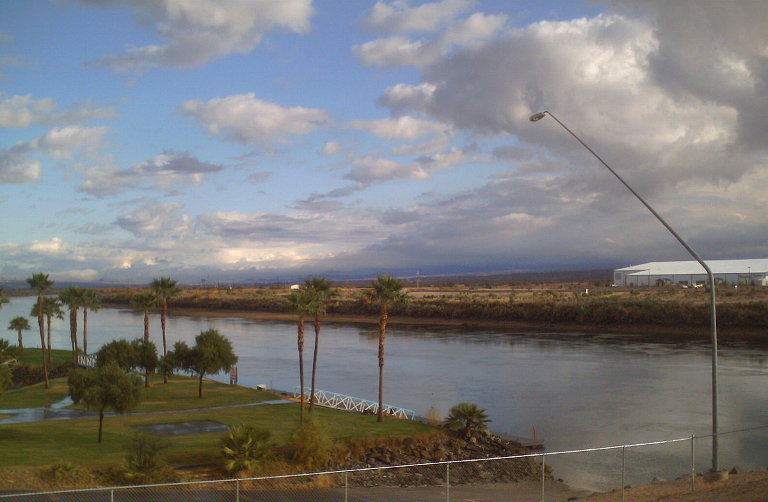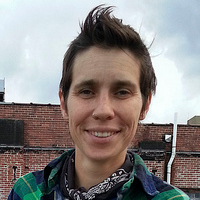APRIL IS OFTEN a time of abundance in the mountains of the American West, when snowpack is at or near its peak, and forecasters work to determine how much runoff will course through our rivers and fill reservoirs later in the season.
This year, across much of the West, particularly the Southwest, there’s little in the way of abundance. At Lake Powell, the second-largest reservoir in the West, runoff is predicted to be only 43 percent of average. Arizona is looking at one of its lowest runoff years in history. And in New Mexico, stretches of the Rio Grande have already run dry, months ahead of normal.
The only consolation is that last year was a wet year and reservoirs received a boost. While it’s typical in the West to have big swings in precipitation from year to year, what has concerned scientists lately is that even good years are no longer producing the kind of runoff seen historically.
It’s even prompted a group of scientists with the Colorado River Research Group to call for a new language to describe the conditions they’re seeing.
“There’s lots of talk of drought but there’s not enough talk that this is likely the new normal,” said Brad Udall, a member of the group and a senior water and climate research scientist at Colorado State University. “We really need to think in the long term that we are actually going to see less water in the [Colorado River] basin and we’re never going back to the 20th century.”
And in the Southwest, this “new normal” may look more like “aridification” than drought.
In a recent white paper from the Colorado River Research Group, scientists write that while drought may be occurring, it doesn’t give the full picture. “For that, perhaps the best available term is aridification, which describes a period of transition to an increasingly water-scarce environment – an evolving new baseline around which future extreme events (droughts and floods) will occur.”Since the turn of the 21st century, the Colorado River basin has been experiencing drought conditions. Bad water years have taken a toll on the system and good years haven’t aided the recovery enough. “We’ve had [fewer of] the normal big years; those are the years that refill our reservoirs and those seem to have gone away or at least now they are less frequent and they seem to be smaller,” said Udall.
Drought, he added, implies something temporary. “And we don’t think this is in fact temporary.”
And that’s because it’s not just about the amount of precipitation. In the past few years, studies have also shown a decline in “runoff efficiency” – or how much water actually makes it to rivers.
One of the biggest reasons is temperature.
“In large part, the answer is that the basin has become hotter, which modifies several facets of the hydrologic cycle that lie between precipitation and runoff, including evapotranspiration and sublimation rates, the timing of snowmelt and soil moisture characteristics,” according to the paper.
Research published last year by Udall and Jonathan Overpeck found that flows declined on the Colorado River by 19 percent between 2000 and 2014 and on average one-third of that falloff was due to rising temperatures.
The science is clear on increasing temperatures in the region, but how much changes in precipitation affect long-term trends remains to be seen. The basin could experience more precipitation with climate change, or bigger swings between wet and dry years or possibly even longer, more severe “megadroughts.” “You can have aridification under climate change even if precipitation stays the same or goes up,” Udall said.
The Colorado River basin is not the only area impacted by this scenario – the Rio Grande basin is in a similar situation, said David Gutzler, a professor of Earth and planetary sciences at the University of New Mexico. “As the climate warms up, now what we see is even when there is a pretty good snowpack, like we had last year, we don’t get enough snowmelt runoff to make a huge impact on [Elephant Butte] reservoir,” which is the main area of storage for the Upper Rio Grande.
Gutzler coauthored a recent study looking at changes in streamflow volume and temperature in the Upper Rio Grande watershed near the river’s southern Colorado headwaters from 1958 to 2015. The study found that, on average, temperatures during winter and spring had increased during the study period and the amount of the snow-water equivalent (or the water in the snowpack) decreased by 25 percent. There was a small decline in streamflow as well, despite a small increase in precipitation on average.
The findings are consistent with previous studies showing that warming is already impacting the West, with a shift to earlier spring snowmelt and more precipitation falling as rain instead of snow.
“We’re seeing the climate change signal of warming temperatures most strongly in the spring season here,” said Gutzler. “That makes these low-flow conditions that we see right now potentially even worse.”
With warmer temperatures, what snow there is melts earlier, and evaporation rates go up, reducing water supply even more. “It’s part of the tendency toward aridity that we’re experiencing in the West,” said Gutzler, which presents a big management challenge.
That doesn’t necessarily mean that a crisis is in store, but a change in the way rivers are managed may be. “We should be able to work out a way to deal with 20 percent less water in a way that doesn’t harm the economy, that doesn’t harm the environment, and if you do it right, it causes minimal harm to agriculture,” said Udall.
The solutions don’t just involve talking about water management, but also reducing greenhouse gas emissions. “There is this total political hang-up on having the discussions we need to have on greenhouse gas emissions,” Udall said. “This is so important and yet we somehow have managed to think we can ignore it – even well-meaning people think they can ignore it and it’s just not the case. We have to, as individuals and states and municipalities, begin to grapple with how to get greenhouse gas emissions down as fast as we can.”
This article originally appeared on Water Deeply. You can find the original here. For important news about water issues and the American West, you can sign up to the Water Deeply email list.
Teaser photo image: By Renjishino – Own work, CC BY 3.0, https://commons.wikimedia.org/w/index.php?curid=4573240
![]() `
`






